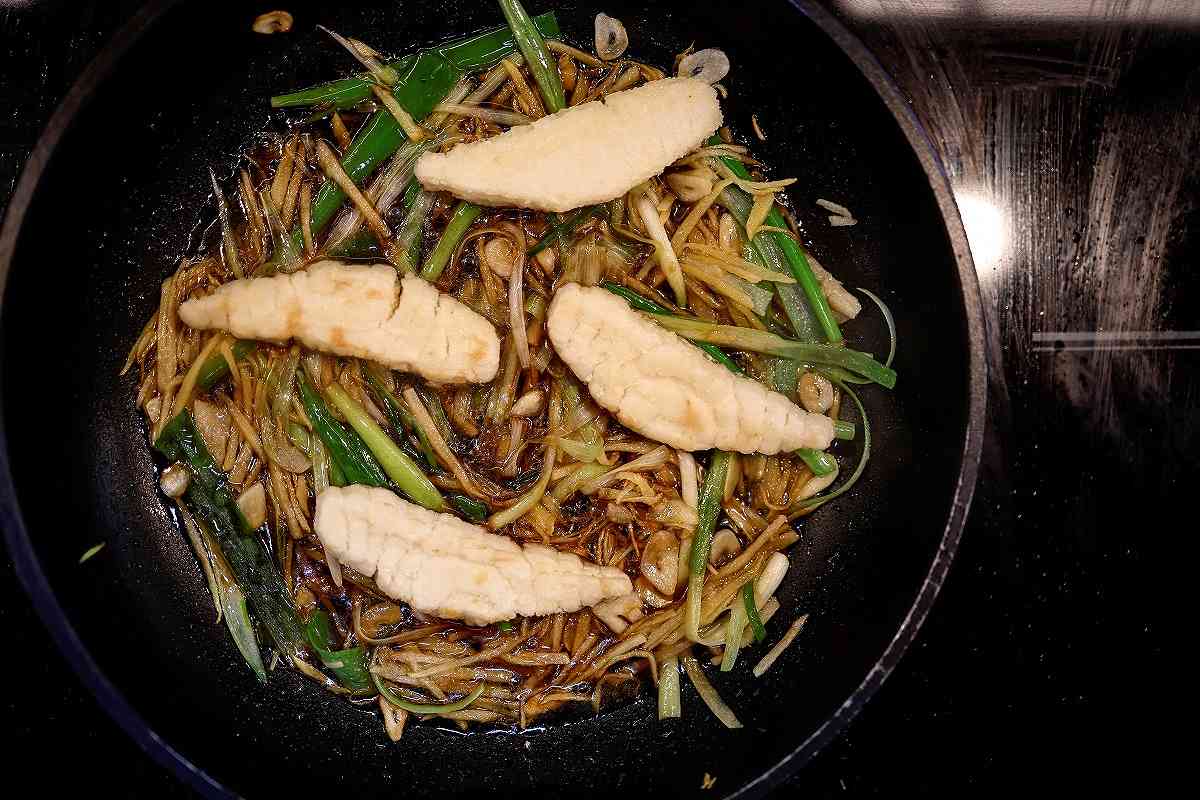
A dish containing pieces of 3D-printed cultivated grouper fish
17:08 JST, June 3, 2023
REHOVOT, Israel (Reuters) — Forget your hook, line and sinker. An Israeli foodtech company said it has 3D printed the first ever ready-to-cook fish fillet using animal cells cultivated and grown in a laboratory.
Lab-grown beef and chicken have drawn attention as a way to sidestep the environmental toll of farming and tackle concerns over animal welfare, but few companies have forayed into seafood.
Israel’s Steakholder Foods has now partnered with Singapore-based Umami Meats to make fish fillets without the need to stalk dwindling fish populations.
Umami Meats extracts cells — for now from grouper — and grows them into muscle and fat. Steakholder Foods then adds them to a ‘bio-ink’ suited for special 3D printers. The outcome: a narrow fillet that mimics the properties of sea-caught fish.
Umami hopes to bring its first products to market next year, starting in Singapore and then, pending regulation, countries like the United States and Japan.
Cell cultivation alone is still too expensive to match the cost of traditional seafood, so for now the fish cells are diluted with plant-based ingredients in the bio-ink.
“As time goes by, the complexity and level of these products will be higher, and the prices linked to producing them will decrease,” said Arik Kaufman, the chief executive of Steakholder Foods.
A glass dish slides back and forth in the 3D printer, the white finger-length fillet building mass with each pass. It has the flakiness of traditional fish and when fried and seasoned it is hard to tell the difference.
The process is simpler than with beef, but there are some disadvantages.
Cow stem cells have been studied extensively but much less is known about fish, said Umami’s chief executive, Mihir Pershad.
“We have to figure out what the cells like to eat, how they like to grow, and there’s just not so much literature to start from,” he said.
“The number of scientists, you can imagine, working on fish stem cell biology is a small fraction of those working on animal cells and human cells.”
They have figured out a process for grouper and eel and hope to add three other endangered species in the coming months, he said.
Meeting the price of fish from the sea is a key challenge.
“We want consumers to choose based on how it tastes and what it can do for the world and the planetary environment. And we want to take cost off the table as consideration,” Pershad added.

A piece of freshly 3D-printed cultivated grouper fish is seen at the offices of Steakholder Foods in Rehovot, Israel, on April 23.
"Science & Nature" POPULAR ARTICLE
-

‘Fiercest, Most Damaging Invasive Weed’ Spreading in Rivers, Lakes in Japan, Alligator Weed Found in Numerous Locations
-

Japan Set to Participate in EU’s R&D Framework, Aims to Boost Cooperation in Tech, Energy
-

Tsunami Can Travel Vast Distances Before Striking, Warn Japanese Researchers
-

Japan’s H3 Rocket Failed in Latest Launch, Says Official
-

Univ. in Japan, Tokyo-Based Startup to Develop Satellite for Disaster Prevention Measures, Bears
JN ACCESS RANKING
-

As Chinese Tourists Shun Japan, Hotels and Stores Suffer
-

Osaka-Kansai Expo’s Economic Impact Estimated at ¥3.6 Trillion, Takes Actual Visitor Numbers into Account
-

Japan Govt Adopts Measures to Curb Mega Solar Power Plant Projects Amid Environmental Concerns
-

BOJ Gov. Ueda: Highly Likely Mechanism for Rising Wages, Prices Will Be Maintained
-

Economic Security Panels Debate Supply Chains, Rare Earths; Participants Emphasize Importance of Cooperation Among Allies
























